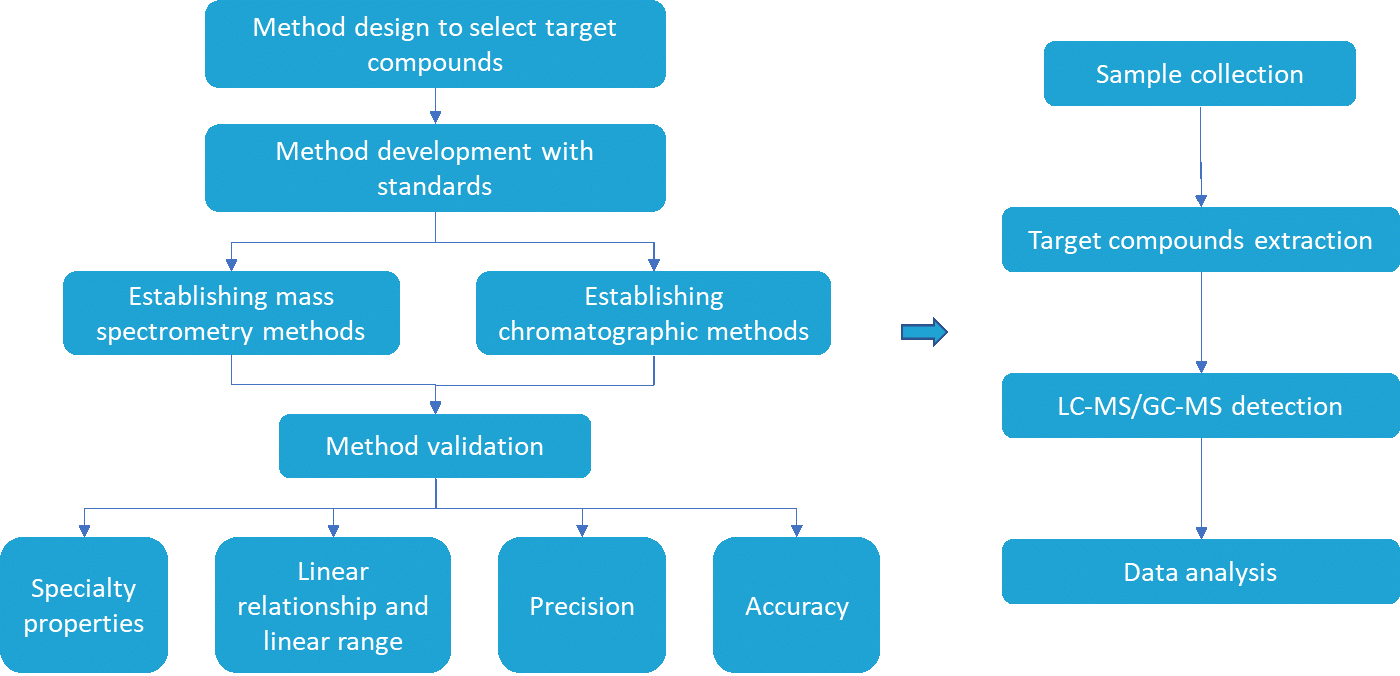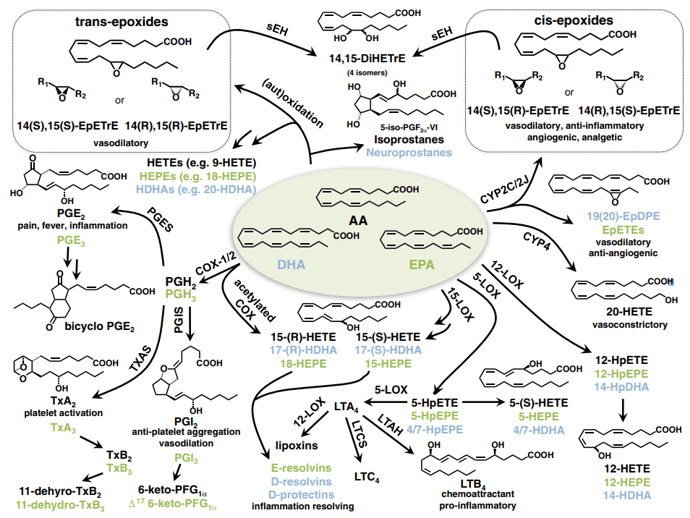Eicosanoids Analysis Service
Submit Your InquiryPolyunsaturated fatty acids (PUFA) can be classified into omega-3, omega-6, omega-7 and omega-9 series according to the location of the first double bond. Linolenic acid (ALA), eicosapentaenoic acid (EPA) and docosahexaenoic acid (DHA) are the typical omega3 series polyunsaturated fatty acids. Double-high-gamma-linoleic acid (DGLA), linoleic acid (LA) and arachidonic acid (AA) are typical omega-6 series polyunsaturated fatty acids.
Eicosanoids are a large group of biologically active substances produced by the oxidation of eicosanoid polyunsaturated fatty acids (AA, EPA, DGLA, etc.).
Eicosanoids are widely present in body fluids and tissues in free form and play an important role in human physiological activities such as blood clotting and wound healing. Eicosanoids are also important inflammatory factors, PGE2 induces inflammation, PGF2α inhibits anti-inflammatory responses, and the balance of PGEs and PGFs influences the development of inflammatory processes. The onset and development of many diseases (e.g. chronic inflammatory diseases, renal diseases, hypertension, etc.) are closely related to the abnormal metabolism of eicosanoids. Eicosanoids are also closely related to cancer and can influence tumorigenesis and development by regulating tumor cell proliferation, affecting the tumor inflammatory microenvironment and tumor immunosuppression.
In mammals, eicosanoids are mainly metabolized by arachidonic acid and other polyunsaturated fatty acids via four pathways, including the cyclooxygenase pathway, lipoxygenase pathway, cytochrome P450 oxidase pathway, and spontaneous oxidation pathway. Since the regulation of eicosanoid metabolism exhibits highly complex network properties, metabolomics has become an effective strategy to systematically study the regulation of eicosanoid metabolic networks.
Eicosanoids are produced and released rapidly in response to various physiological and pathological stimuli, and are synthesized in small amounts and are less stable, so the amounts of eicosanoids in biological samples is extremely low. Moreover, eicosanoids are structurally similar, and there are a large number of isomeric phenomena. Creative Proteomics has established an ultra-performance liquid chromatography-mass spectrometry (UPLC-MS/MS) detection platform for the qualitative and quantitative determination of eicosanoids to accelerate your research progress.
Service Workflow

We Can Provide Analysis for The Following Substances, Including but Not Limited to
| Prostaglandin (PG) | Thromboxane (TX) | Leukotrienes (LT) | Lipoxygenin (LX) |
| Arachidic acid | Arachidonic acid |
Sample Requirements
We analyze a wide range of biological materials and can also accept industrial samples.
- Plant tissues ≥ 100 mg/sample
- Animal tissues ≥ 100 mg/sample
- Blood / Serum / Plasma ≥ 200 μL/sample
- Urine ≥ 100 µl
- Stool ≥ 100 mg
Want to analyze other samples? Please contact our technical staff.
Deliverables
- Experimental protocols
- Instrument parameters
- MS raw data files and MS data quality checks
- Absolute quantitative data of Arachidic Acid
- Bioinformatics analysis report
If you want to test other fatty acids or have other questions, please contact us and we will be happy to answer them for you. We look forward to working with you.





